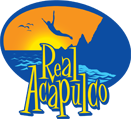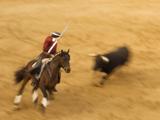Bullfighting
The bullfights don't take place all year around. They are scheduled only in January and February, during the high tourist season. In the case of Acapulco, bullfighting is more of a tourist attraction than a cultural event of great interest to the acapulqueños. In days gone by it was, of course, but now the locals are more fascinated by DVD players and cell phones.
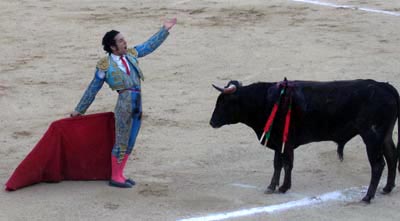
The Corrida de Torros, also known as “La Fiesta Brava,” is held at the Plaza de Torros in the Caletilla area of Traditional Acapulco. Cost ranges from $35 to $15 depending upon how close the seats are and whether they're on the shady side of the ring. There is so much space though that once inside you're pretty much free to move around wherever you want. The plaza de toros is a pleasant arena. It has an especially exotic feeling with its tropical palms and lush green trees all around the edge.
These photos were taken at a bullfight on February 27th, 2005.
The bullfight begins with the brave matadors, about 10 of them, who make their way to take a bow in the center of the ring. They are all decked out in the height of matador fashion. You can hear a collective “wow” from the ladies in the audience. Though they look very dashing in the bull ring, the getup probably would not score too many points in the discos at the other end of the bay. By now the audience — mainly gringos — is eagerly awaiting the excitement to come. From high in the stands two live brass bands kick into the bullfight music with horns blaring. The first bull enters the ring, snarling and charging at everything in site. A great cheer rises from the crowd. Then the mood begins to change. As the bull makes a charge at the matador, he takes two small colorful small spears and plunges them into bull's back above his neck. Then blood starts gushing out of the wounds and down its sides. The smiles on the faces of the tourists stiffen with shock and horror: “This isn't what happened in bullfights in Lonely Tunes!”
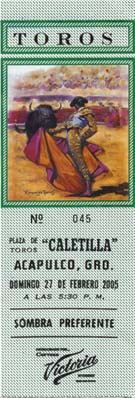
The ensuing minutes bring more daggers and more blood. If the matador gets into a spot of trouble, the other matadors rush in to distract the bull until he can get away. By now blood and gore are streaming down the bull's back and he's getting slow. At this point, the matador moves in to give the crowd its show. Using the cape and dancing around the dizzy bull with ease to shouts of “¡Olé!” he sticks his sword into the bull's back. The bull grows weak in the knees and crumples down. Then the matador plunges the final dagger into the back of the bull’s neck, and the animal dies slowly, convulsing blood everywhere before the carcass is unceremoniously dragged out of the ring by a team of horses. But for the trumpets, you can hear a pin drop after the death of the first bull. Usually the tourists are just stunned.
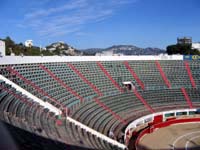
Then there are three more rounds just like the first one — no rodeo clowns and no half time show. Dozens upon dozens more stab wounds are to come, culminating in three more dead bulls. The shock of the first bull usually has a numbing effect so that by the fourth bull, a few in the crowd will be getting more into the experience to the point of shouting “¡Olé!” themselves. Some will go home reporting that the whole affair was “interesting.” Others will say they cried. A few, perhaps, will report having looked in on a strange ritual of a foreign culture. If you are inclined to favor the underdog in competitions, bull fights are not for you. The bull never wins, and only very seldom does he even get in a good shot.
